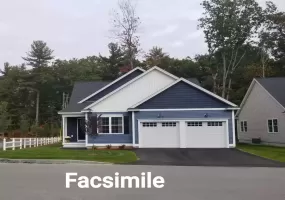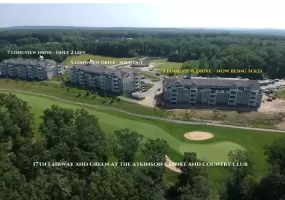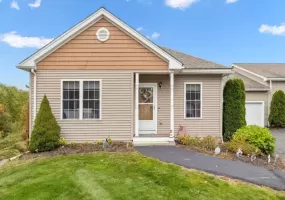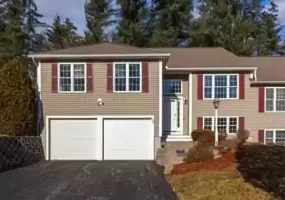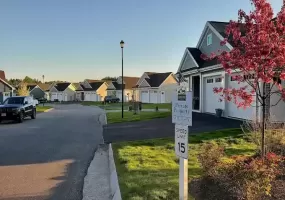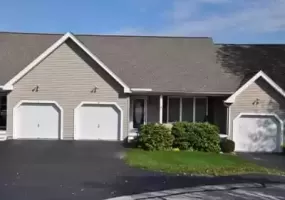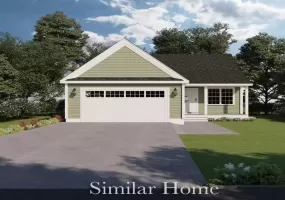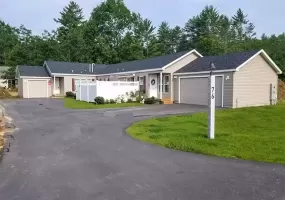![]()
FAQ: Common Questions about Senior Living Marketing
Q: How important is it for senior living communities to embrace digital marketing?
A: In today’s digital age, it is crucial for senior living communities to embrace digital marketing. With seniors spending more time online, digital channels provide an effective way to reach and engage with your target audience. By leveraging online platforms, you can expand your reach, attract more prospects, and position your community as a go-to choice for seniors and their families.
Q: How can branding help retirement communities stand out in a competitive market?
A: Branding plays a vital role in establishing a competitive edge for retirement communities. By defining a unique value proposition, maintaining consistent messaging, designing a visually appealing identity, and harnessing the power of digital marketing, retirement communities can create a strong brand that resonates with their target audience. A well-crafted brand identity not only attracts prospective residents but also instills trust and confidence in the community’s offerings and services.
Q: What are some key elements to consider when creating a senior living website?
A: When creating a senior living website, it’s important to highlight services, incorporate dynamic content, showcase leadership and team members, feature testimonials, and emphasize amenities and activities. These elements contribute to an engaging and effective website that effectively communicates your community’s commitment to providing exceptional care and a fulfilling lifestyle for seniors.
Q: How can marketing automation benefit senior living communities?
A: Marketing automation can benefit senior living communities by enabling targeted lead nurturing, personalized communication, and effective tracking of digital engagement. It allows communities to segment leads, deliver relevant content, initiate timely communication through behavioral triggers, integrate with CRM systems, and optimize campaign performance. Marketing automation streamlines marketing and sales processes, enhances engagement with prospective residents, and increases conversions.
Q: Is it necessary to have a strong online presence for senior living communities?
A: Yes, having a strong online presence is essential for senior living communities. In today’s digital landscape, seniors and their families often research and explore options online when considering senior living. A user-friendly and informative website, active social media profiles, and online advertising campaigns targeted at relevant demographics are all crucial for attracting and engaging with potential residents. An online presence helps boost brand visibility, credibility, and inquiries for senior living communities.
Q: How can social media platforms be utilized to effectively market senior living communities?
A: Social media platforms offer a valuable opportunity to engage with seniors and their families. By creating compelling content, utilizing targeted advertising, and fostering a sense of community, senior living communities can build brand awareness, drive website traffic, and generate leads. Social media also allows for real-time interaction, customer feedback, and the sharing of resident stories, further enhancing the community’s online presence and reputation.
Q: What role does content marketing play in senior living marketing strategies?
A: Content marketing plays a crucial role in senior living marketing strategies. By creating and sharing relevant, informative, and engaging content, such as blog posts, articles, videos, and guides, senior living communities can position themselves as industry experts and thought leaders. Content marketing establishes trust, educates prospects, and provides valuable resources for seniors and their families during the decision-making process.
Q: How can online reviews and testimonials impact the marketing efforts of senior living communities?
A: Online reviews and testimonials hold significant influence in the decision-making process for seniors and their families. Positive reviews and testimonials from current residents and their families can greatly enhance the reputation and credibility of a senior living community. Encouraging residents to share their positive experiences and responding promptly to any negative feedback demonstrates transparency, responsiveness, and a commitment to resident satisfaction.
Q: What are some effective strategies for targeting and reaching the adult children of seniors in marketing campaigns?
A: When targeting the adult children of seniors in marketing campaigns, it’s essential to emphasize the benefits and peace of mind that your senior living community offers. Consider partnering with local organizations, leveraging social media platforms, hosting educational webinars, and utilizing targeted digital advertising to reach this demographic. Tailor messaging to address their concerns, provide relevant information, and position your community as the ideal choice for their aging parents.
Q: How can senior living communities measure the effectiveness of their marketing efforts?
A: Senior living communities can measure the effectiveness of their marketing efforts through various metrics and analytics. Tracking website traffic, lead conversions, email open and click-through rates, social media engagement, and online inquiries can provide valuable insights into the success of marketing campaigns. Additionally, conducting resident surveys and monitoring occupancy rates can help assess the overall impact of marketing initiatives on the community’s success.
The Evolving Landscape of Senior Living Marketing: Tapping into Online Opportunities
Seniors Spending More Time Online:
While traditional marketing channels such as newspapers, television, and physical mail still hold significance in senior living marketing, it’s crucial to adapt to the changing times. Today, seniors are spending more time online than ever before, creating an opportunity for us to connect with them in real-time. By leveraging the digital landscape, we can effectively reach the right audience exactly where they are.
Recognizing Opportunities in Changing Times:
In times of change, those who are quick to recognize and seize opportunities will not only survive but thrive. Senior living communities that adapt their marketing strategies to embrace online platforms and digital channels have a competitive edge in today’s evolving market. By capitalizing on these opportunities, you can expand your reach, attract more prospects, and position your community as the go-to choice for seniors and their families.
Transitioning to senior living is a significant decision that requires careful consideration and trust. Effective marketing plays a vital role in establishing this trust, easing concerns, and guiding prospects through the decision-making process. By embracing both traditional and digital marketing channels, senior living communities can reach their target demographic and thrive in a competitive marketplace.
Branding Retirement Communities: Creating an Impactful Identity in a Competitive Market
In today’s competitive market, establishing a strong brand identity is crucial for retirement communities. This article explores the importance of branding in the context of retirement communities and provides insights into how to create an impactful and memorable brand. From defining a unique value proposition to effectively communicating the community’s offerings, we delve into the strategies that can help retirement communities stand out and attract prospective residents.
Crafting a Compelling Brand Identity: Differentiating Your Retirement Community
Defining Your Unique Value Proposition: To effectively brand a retirement community, it is essential to identify and highlight its unique value proposition. This involves understanding the community’s strengths, such as exceptional amenities, specialized care services, or a distinctive location. By emphasizing these unique aspects, retirement communities can differentiate themselves from competitors and create a compelling brand identity that resonates with their target audience.
Building Trust through Consistent Brand Messaging and Communication
Consistency in Brand Messaging: A strong brand relies on consistent messaging and communication across various channels. Retirement communities should ensure that their brand voice, values, and promises are conveyed consistently through marketing materials, website content, social media, and other communication platforms. By maintaining a cohesive brand image, communities can build trust and credibility with prospective residents and their families.
Engaging Visual Branding: Designing a Memorable and Cohesive Visual Identity
Creating a Memorable Visual Identity: Visual branding plays a crucial role in creating a lasting impression. Retirement communities should invest in professional logo design, typography, color palettes, and imagery that align with their brand personality and target demographic. Consistency in visual elements across all touchpoints, from signage to digital platforms, helps in reinforcing the community’s brand identity and enhancing recognition among potential residents.
Harnessing the Power of Online Presence and Digital Marketing
Maximizing Online Presence:
In today’s digital age, retirement communities must have a strong online presence. This includes a user-friendly and informative website, active social media profiles, and online advertising campaigns targeted at relevant demographics. By optimizing their digital marketing strategies, retirement communities can effectively reach and engage with potential residents, boosting brand visibility and attracting inquiries.
Branding is a vital component for retirement communities aiming to establish a competitive edge in the market. By defining a unique value proposition, maintaining consistent messaging, designing a visually appealing identity, and harnessing the power of digital marketing, retirement communities can create a strong brand that resonates with their target audience. A well-crafted brand identity not only attracts prospective residents but also instills trust and confidence in the community’s offerings and services.
Addressing Branding Challenges in Retirement Communities: Strategies for Positioning and Unifying the Brand
Branding in the context of retirement communities comes with its own unique set of challenges. This article continues the discussion on branding retirement communities and delves into specific issues frequently encountered by these communities. From establishing differentiation to brand architecture and employee engagement, we explore strategies to navigate these branding challenges effectively. By focusing on brand positioning, strategy, architecture, identity, and customer touchpoints, retirement communities can overcome these hurdles and create a cohesive and impactful brand experience.
- Establishing Relevant Differentiation:
- Creating a Unique Value Proposition: Differentiating a retirement community from competitors is crucial in a competitive market. By identifying and emphasizing unique aspects such as amenities, services, or location, communities can establish a compelling value proposition that sets them apart.
- Navigating Brand Architecture Challenges:
- Building a Cohesive Brand Architecture: Retirement communities often face challenges related to brand architecture, especially in cases involving mergers, acquisitions, or multiple properties with different names. Developing clear naming conventions and brand architecture guidelines can help create consistency and clarity.
- Key considerations include:
- Naming independent living, assisted living, and skilled care facilities
- Accommodating donor-named amenities and spaces
- Reconciling commonly used names with legal names
- Addressing off-campus service branding
- Naming amenities, apartment complexes, and satellite centers
- Targeting New Segments and Balancing Active Lifestyle and Medical Care:
- Appealing to a Younger Senior Segment and Accommodating Changing Needs: Retirement communities often face the challenge of appealing to a younger senior segment (55-70) who may be seeking an active lifestyle community before the onset of significant medical issues. Balancing the messaging and positioning to cater to both active living and the ability to provide care for worsening medical conditions is crucial.
- Delivering on the Brand Promise:
- Reinforcing at Every Customer Touchpoint: Retirement communities must reinforce their brand promise at every customer touchpoint. This includes creating a seamless experience from the initial inquiry to the purchase decision and beyond. Clear communication, personalized interactions, and consistent messaging contribute to a positive brand experience.
- Building Brand Awareness and Engaging Employees as Brand Champions:
- Cost-Effective Brand Awareness: Retirement communities can build brand awareness cost-effectively through various channels such as local events, partnerships with community organizations, targeted advertising, and online presence.
- Engaging Employees as Brand Champions: Aligning employees with the brand promise and providing training and resources can cultivate a culture where employees advocate for the brand and deliver exceptional experiences to residents.
Retirement communities face a unique set of branding challenges that require careful consideration and strategic approaches. By addressing issues related to differentiation, brand architecture, target segments, brand promise delivery, campus branding, brand awareness, and employee engagement, retirement communities can establish a strong and unified brand identity. Conducting research and gaining insights from current and prospective residents and their adult children influencers can inform the branding strategies, leading to successful positioning and differentiation in the market.
Creating an Engaging and Effective Senior Living Website: Key Elements for Success”
Introduction: In the digital age, a well-designed website is essential for nursing home facilities and senior living communities to effectively communicate with their target audience. By following some fundamental principles and focusing on specific elements, you can create a successful website that attracts visitors and promotes your services. In this article, we’ll explore key strategies for developing a strong online presence in the senior care industry.
- Highlighting Services:
- Clearly showcase the different services offered, such as assisted living, skilled nursing, and independent living.
- Optimize your website for search engines by incorporating relevant keywords and phrases related to specific services.
- Provide quick links and easy navigation to allow visitors to explore and learn more about the services you offer.
- Add Dynamic Content:
- Regularly update your website with fresh content to keep visitors engaged and encourage return visits.
- Include activities calendars, special events, community news, blogs, and newsletters to provide a wealth of information for prospective residents and their families.
- Showcase dynamic content on the home page to create a vibrant and interactive experience for visitors.
- Showcase Leadership and Team:
- Introduce your leadership team and staff members through brief bios and professional photos.
- Highlight their expertise, experience, and commitment to providing compassionate care.
- Establish a personal connection with potential residents by showcasing the people who will be responsible for their well-being.
- Testimonials:
- Feature testimonials from previous patients and residents to build trust and credibility.
- Highlight positive experiences and outcomes to assure prospective residents and their families of the quality of care you provide.
- If testimonials are limited, consider reaching out to satisfied individuals and kindly request them to provide feedback to feature on your website.
- Amenities and Activities:
- Emphasize the amenities and activities that contribute to a vibrant and fulfilling lifestyle within your community.
- Showcase services like beauty salons, common areas for socializing, restaurant-style meals, laundry services, and engaging activities.
- Provide a monthly activities calendar to highlight the range of options available and demonstrate a focus on holistic well-being.
Conclusion: Creating a successful senior living website requires a thoughtful approach that focuses on highlighting services, engaging visitors with dynamic content, showcasing leadership and team members, incorporating testimonials, and emphasizing amenities and activities. By implementing these strategies, you can develop an impactful online presence that effectively communicates your commitment to providing exceptional care and a fulfilling lifestyle for seniors. If you need assistance in designing and maintaining an engaging website, contact with over 20 years of experience in creating compelling online communications for senior care companies.
Boost Conversions and Sales: 5 Best Practices for Senior Living Marketing Automation
Introduction: Marketing automation has become a valuable tool in the senior living industry, enabling targeted lead nurturing and effective communication with prospective residents. By implementing marketing automation platforms integrated with your technology suite, you can track leads’ digital engagement and activities, segment them appropriately, and deliver personalized content to guide them through the buyer’s journey. In this article, we will explore five best practices for utilizing marketing automation in the senior living sector.
Segment Leads for Personalized Outreach:
- Utilize the data gathered from leads’ digital engagement to segment them based on their interests, preferences, and stage in the buyer’s journey.
- Tailor your content and messaging to match each segment’s needs and provide relevant information that resonates with their specific concerns and desires.
- By personalizing your outreach, you can create stronger connections, enhance engagement, and increase the likelihood of conversions.
Implement Lead Nurturing Campaigns:
- Develop automated lead nurturing campaigns that deliver targeted content at different stages of the buyer’s journey.
- Utilize email marketing and other communication channels to provide valuable information, address common concerns, and showcase the benefits of your senior living community.
- Regularly assess the performance of your nurturing campaigns and make adjustments based on data insights to optimize results.
Utilize Behavioral Triggers:
- Set up behavioral triggers within your marketing automation platform to initiate timely and relevant communication based on specific actions or events.
- For example, if a lead visits your pricing page multiple times, you can automatically send them a personalized email with pricing details and incentives.
- Behavioral triggers help you engage leads at critical moments, increasing the chances of conversion and moving them closer to a decision.
Integrate with CRM and Sales Processes:
- Ensure seamless integration between your marketing automation platform and your customer relationship management (CRM) system.
- This integration enables the sales team to access lead information, track interactions, and have informed discussions that align with the lead’s journey.
- Provide sales teams with comprehensive lead profiles and real-time insights to facilitate effective follow-ups and personalized communication.
Analyze and Optimize Campaign Performance:
- Regularly analyze the performance of your marketing automation campaigns using key metrics such as open rates, click-through rates, and conversion rates.
- Identify areas for improvement and make data-driven adjustments to optimize campaign effectiveness.
- Use A/B testing to experiment with different content, subject lines, and calls-to-action to continually refine and enhance your marketing automation efforts.
Marketing automation plays a crucial role in lead nurturing and conversion for senior living communities. By effectively segmenting leads, implementing lead nurturing campaigns, utilizing behavioral triggers, integrating with CRM systems, and continuously analyzing campaign performance, you can maximize the impact of your marketing automation efforts. Embrace these best practices to streamline your marketing and sales processes, enhance engagement with prospective residents, and drive conversions for your senior living community.
Maximizing Marketing Automation for Senior Living: 5 Essential Best Practices
Introduction: Marketing automation has become a game-changer in the senior living industry, enabling communities to nurture leads effectively and personalize their communication. By implementing marketing automation platforms and leveraging digital engagement data, senior living communities can enhance lead nurturing, prioritize sales efforts, and drive conversions. In this article, we will explore five best practices for leveraging marketing automation to its full potential in the senior living sector.
Start Lead Nurturing Immediately:
- Initiate nurture programs to educate and engage leads who are in the early stages of their decision-making process.
- Recognize that not all leads are ready for direct sales interactions. Provide valuable content and resources to help leads self-qualify and make informed decisions.
- Track leads’ digital engagement with emails and the website, and utilize this data to inform targeted conversations when the lead is ready to connect with a sales counselor.
Align Marketing Automation with Community Goals:
- Tailor your marketing automation program to align with your community’s specific goals and objectives.
- Whether it’s nurturing waitlisters, reengaging colder leads, or focusing on hot and warm leads, customize your automation workflows accordingly.
- Continuously assess and adjust your program to ensure it addresses the evolving needs of your community and its sales cycle.
Consider Your Audience:
- Understand that your audience may vary, including both senior prospective residents and caregivers/family members.
- Adapt your messaging and communication style to resonate with the intended audience, recognizing their unique needs, concerns, and decision-making dynamics.
Focus on Teasing Content and Driving Website Traffic:
- Avoid overwhelming emails with excessive details about your community. Instead, tease valuable content and direct leads to your website to explore further.
- Leverage your website’s comprehensive digital library to provide a rich and immersive experience for leads, allowing them to discover the unique features and benefits of your community.
Leverage Digital Engagement Data for Personalized Conversations:
- Capitalize on the data collected through marketing automation platforms, including email engagement metrics and website behavior tracking.
- Utilize this data to identify leads’ interests and preferences, enabling targeted conversations that align with their specific needs.
- Prioritize sales efforts based on lead scores derived from digital engagement data, focusing on leads who have demonstrated high interest and engagement.
Marketing automation has revolutionized lead nurturing and communication strategies in the senior living industry. By implementing these five best practices, senior living communities can maximize the potential of marketing automation, nurture leads effectively, and drive conversions. Embrace the power of data-driven personalization and targeted communication to build strong relationships with leads, enhance the sales process, and ultimately achieve greater success in the competitive senior living market.

